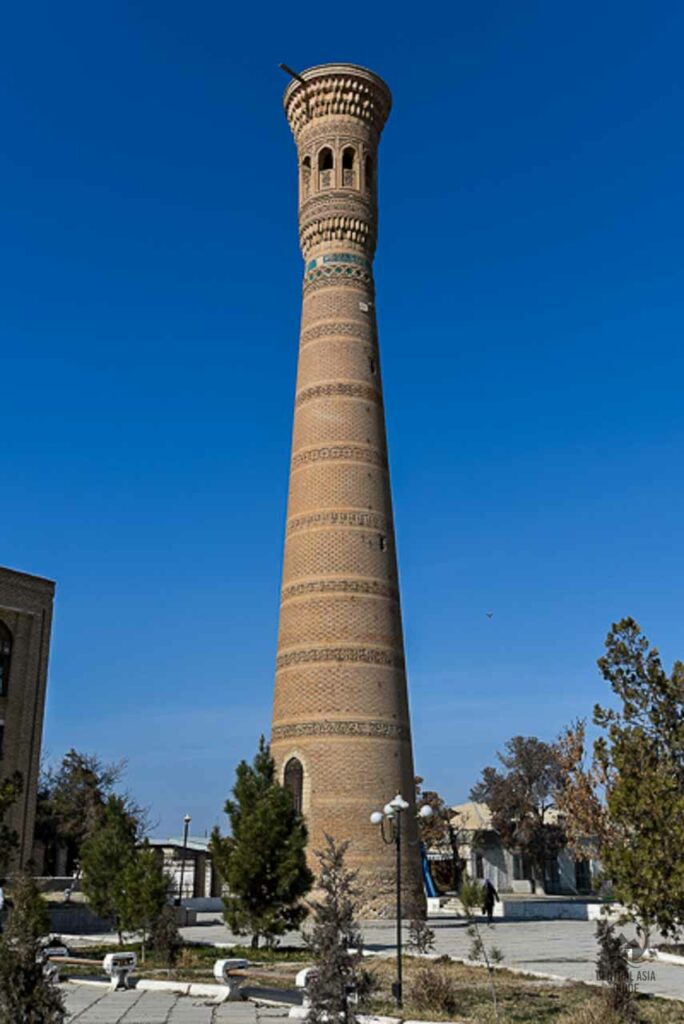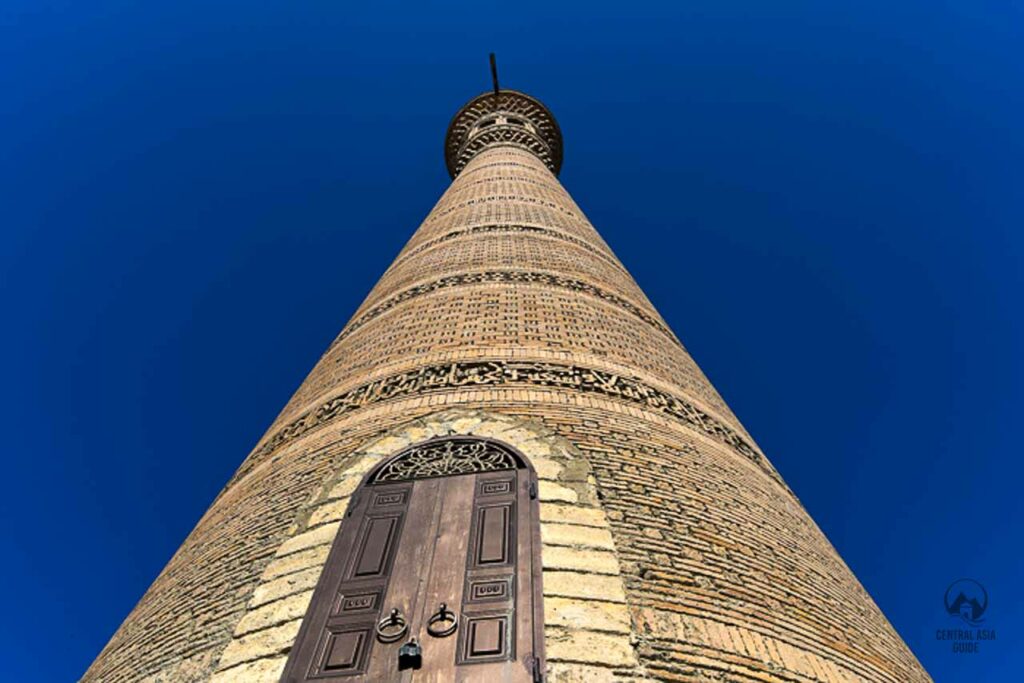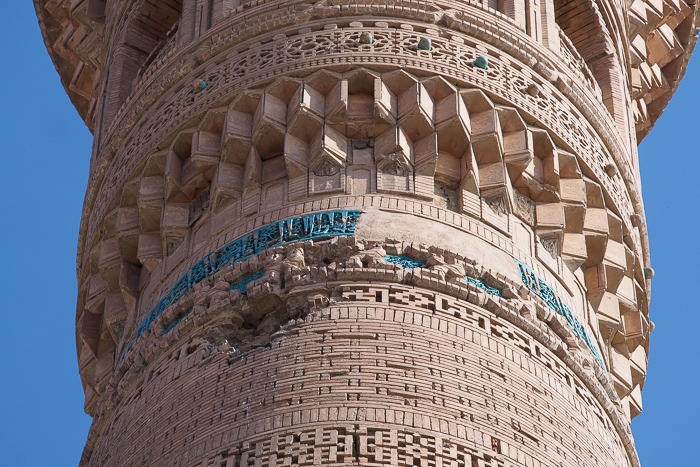Vobkent minaret
Vobkent Minaret
Situated in the city of Vobkent, adjacent to Bukhara, the minaret stands as the prominent emblem of Vobkent and is a compelling contender for inclusion in the UNESCO World Heritage List. Rising proudly just a few kilometres from the highway linking Bukhara and Samarkand, traversing the heart of Vobkent, its soaring height measures 40.3 meters. Unlike its counterparts from the Karakhanid era in Uzgen and Burana in Kyrgyzstan, this minaret has been meticulously preserved in its entirety.
The Vobkent Minaret stands as a testament to architectural mastery, blending fired brick, wood, stone, and gypsum in its construction. It showcases the distinctive features of the renowned pre-Mongol Central Asian aesthetic, adorned with bands and ornamental patterns. The minaret, intricately divided into ten sections, showcases distinct patterns on each band, with unique designs crafted from glazed tiles adorning every section. Ascending it required navigating a spiral staircase accessed through a door adjacent to the neighbouring mosque
History of Vobkent Minaret
Constructed between 1196 and 1199 during the Karakhanid state, the initiative was spearheaded by Abdulaziz Sadr, whose name and the construction date are etched onto one of the minaret’s ornamental bands. In times gone by, the minaret served a multifaceted role.
The minaret acted as both an observatory tower and a site of religious significance, particularly in summoning Muslims to prayer at the neighboring mosque. Additionally, it functioned as a beacon, heralding citizens to gather in the square for the proclamation of vital decrees and announcements. Opposite the minaret, there once stood a madrasa and mosque, and fragments of these structures endure to this day.
The architecture of Vobkent minaret
The Vobkent Minaret rises to an impressive height of 38.7 meters, built from bricks with double-width bonds. Its slender design gradually narrows toward the top, culminating in a decorative lantern once used for the muezzin’s call to prayer.
Visitors will find an intriguing staircase inside, illuminated by small windows. The entrance, located four meters above the ground, hints at its historical connection to an adjacent mosque that no longer exists. This architectural detail mirrors the style of the Kutlug-Timur Minaret in Konye-Urgench.
Though modest in decoration, the minaret’s beauty lies in its intricate details. The bare brick shaft is accented by bands of Kufic calligraphy and geometric patterns, interrupted only by turquoise-glazed terracotta stars and inscriptions beneath the lantern. The junction between the shaft and lantern is marked by ornate muqarnas (stalactite-like embellishments), further elevating its architectural elegance.

Comparisons to the Kalyan Minaret
The Great Minaret of Vobkent shares architectural similarities with the iconic Kalyan Minaret in Bukhara, constructed earlier in the 12th century by Karakhanid ruler Muhammad Arslan Khan (1102-29). While the Vobkent Minaret is slightly shorter at 40,3 meters compared to the 45,6 meters of the Kalyan Minaret, it remains a remarkable testament to the craftsmanship of its time.
Vobkent minaret - Cultural Importance
A Kufic inscription at the base of the minaret dates its construction to 1197-98, making it a decade older than the Chashma Ayub Mausoleum. The inscription attributes the monument to Abd al-Aziz II, a member of Bukhara’s elite sudur (aristocracy) who ruled under Karakhanid ruler Ibrahim Arslan Khan (1178-1204). Abd al-Aziz, a prolific patron of architecture, also commissioned notable structures in Bukhara, including the Namazgah and Friday mosques. A bold inscription on the uppermost band of the minaret proclaims: “May God accept and reward him greatly who ordered its construction.”


Visiting Vobkent Minaret
The Great Minaret of Vobkent offers a glimpse into the grandeur of pre-Mongol Central Asia, making it an essential stop for history enthusiasts and architectural admirers. Its strategic location between Bukhara and Gijduvon adds to its appeal, allowing visitors to explore both this historic gem and the vibrant cultural heritage of the region.